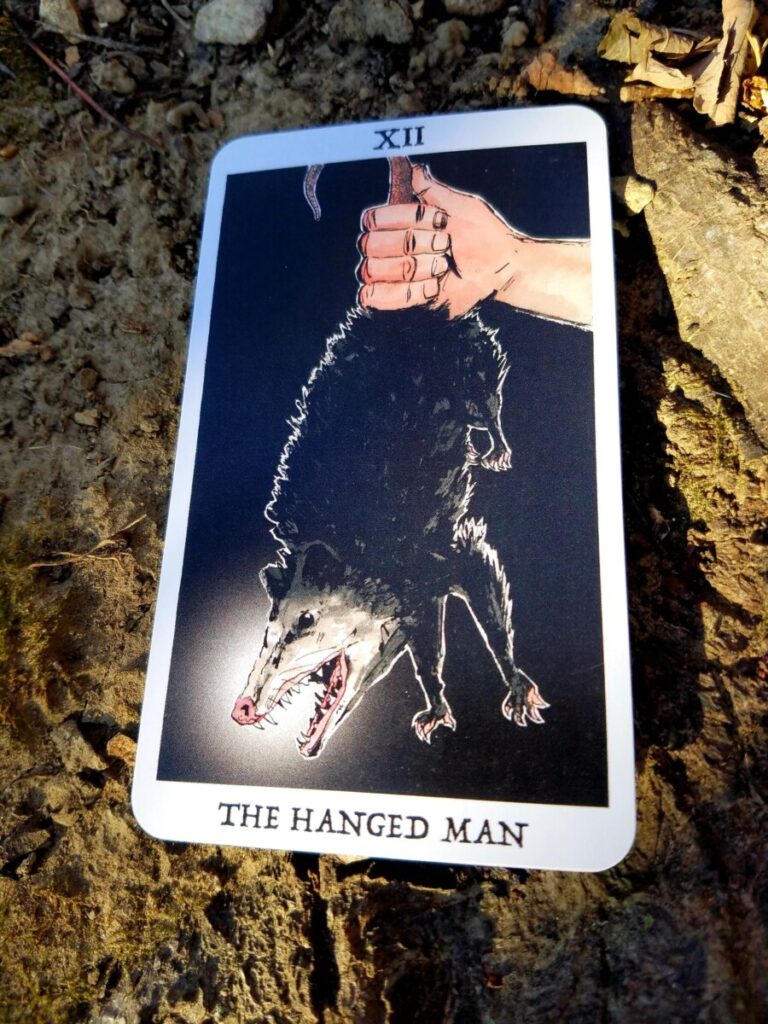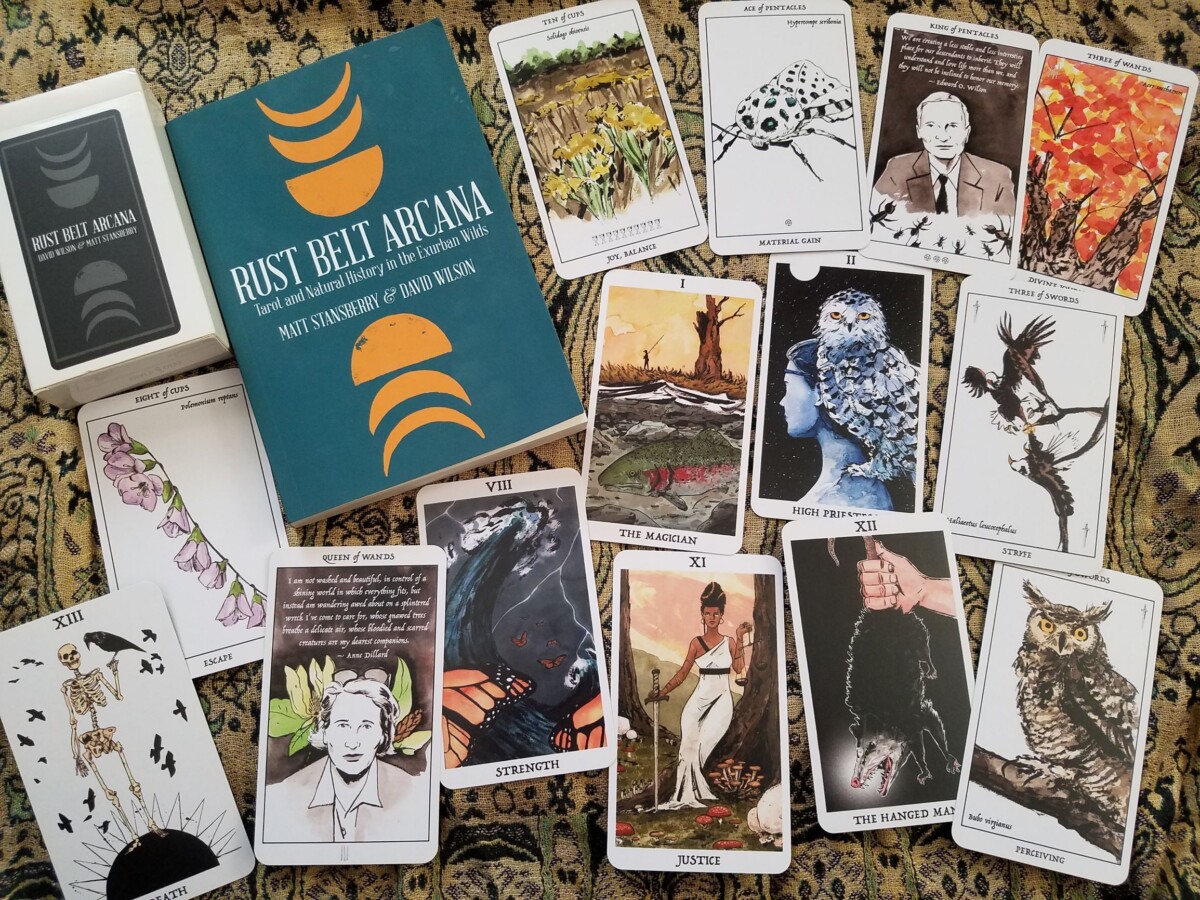“Each user projects their own experiences, beliefs, fears, and desires onto the cards.”- Matt Stansberry
Feast your eyes on The Rust Belt Arcana tarot deck by Matt Stansberry and David Wilson. This fascinating, unique, gorgeous deck examines the meaning of the tarot through the lens of natural history. The Rust Belt Arcana book is wonderfully written and debuted October 30th 2018. The deck was published shortly after. Both are available from Belt Publishing.
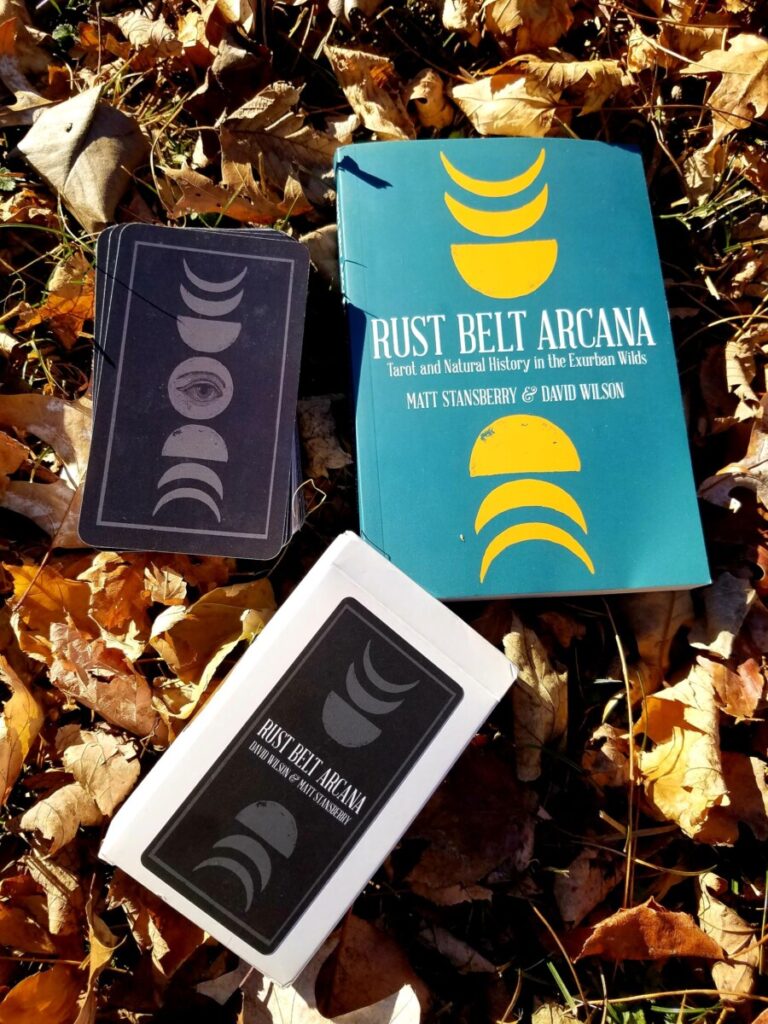
The Rust Belt Arcana tarot is a traditional 78 card deck that follows the Rider Waite Smith placements. It is standard tarot size and the card stock shuffles easily. The watercolor prints by David Wilson deviate from the original artwork of Pamela Coleman Smith and feature the flora and fauna found in the rust belt. Each card is both beautiful and intriguing.
There is no little white book that comes with the Rust Belt Arcana, and the essays by Matt Stansberry only cover his take on the majors, but he does so in a profound way. This is not a normal tarot book that tells you the card meanings, shows a few spreads and sends you on your way. This is a naturalist’s take on the tarot told through narrative cycles in nature.
I could not help but think of the delicate natural balance humans are so great at destroying, and the interconnectedness of us all as I read. It tugged at my heart and roused my inner planeteer. Even if you don’t buy the deck, buy the book and savor each page. If you’re a tarot reader it will strengthen your practice, and even if you’re not, you’ll learn so much about the landscape we overlook, our place in it, and our responsibility toward it. Worth it.
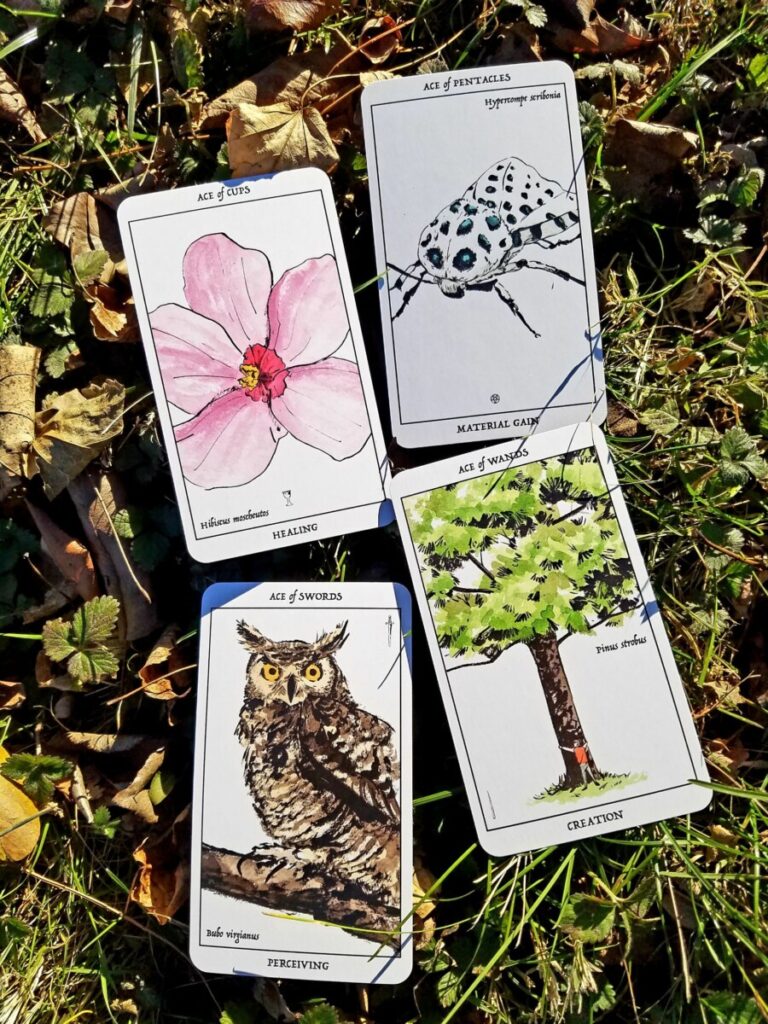
Back to the deck. The division of the minor arcana is a stroke of creative genius. Flowers represent cups/water, insects are pentacles/earth, birds are swords/air, and trees are wands/fire. Each card is labeled with its name and the binomial nomenclature of each plant or animal depicted, and includes a keyword associated with the card’s traditional meaning at the bottom.
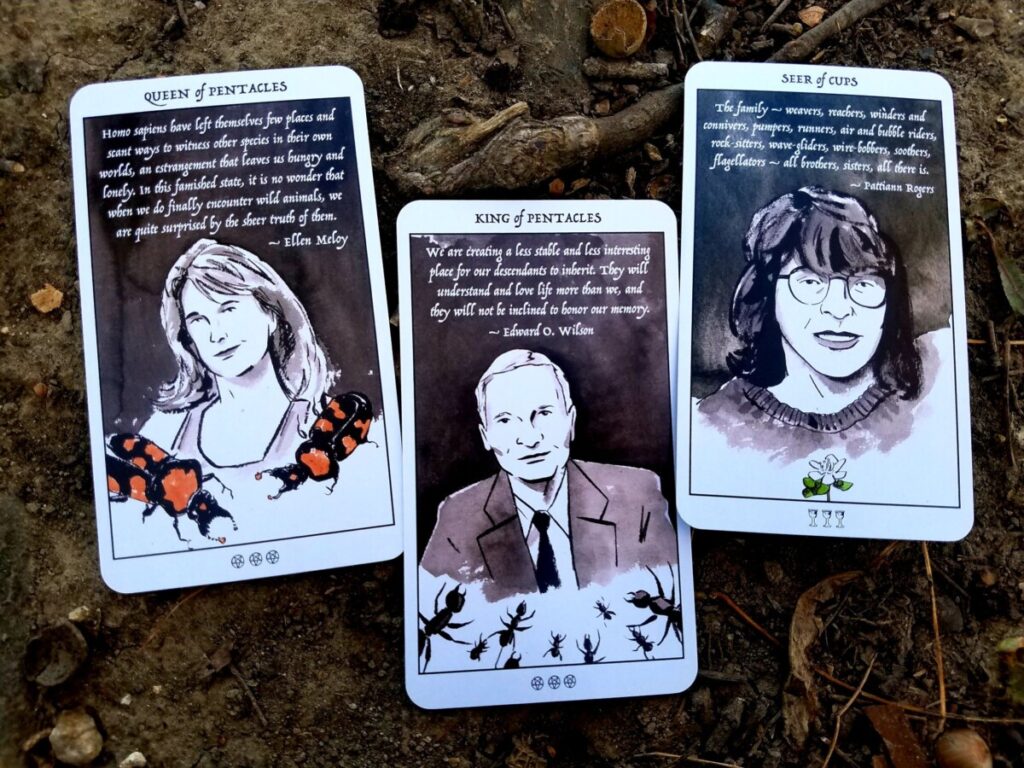
The court cards in the rust belt arcana initially confused me. Each depicts a person and a quote from their work. Who were these people? Ellen Meloy, Edward O. Wilson, Pattiann Rogers? Were they all scientists related to the field of each suit? Was the sword court all ornithologists? To find out, I went to the repository for all human knowledge, Google, and did some digging.
The Rust Belt Arcana court cards were not all scientists, though a few were. Some were poets, essayists, novalists, and professors. I wondered then if they were rust belt natives, or perhaps they settled there, but it turns out they are from all over. So why were these specific people chosen? What were their connections to each suit? I was stumped, so I reached out to Matt Stansberry and HE GOT BACK TO ME!
I asked Matt about his choices and he wrote, “I like bibliomancy. Writing Rust Belt Arcana I was surrounded by books for research, so when I needed models for the court, I looked for writers and thinkers who inspired me. I checked the standard fixed meanings associated with the court cards and found the quotes that seemed to best synch with that meaning.”
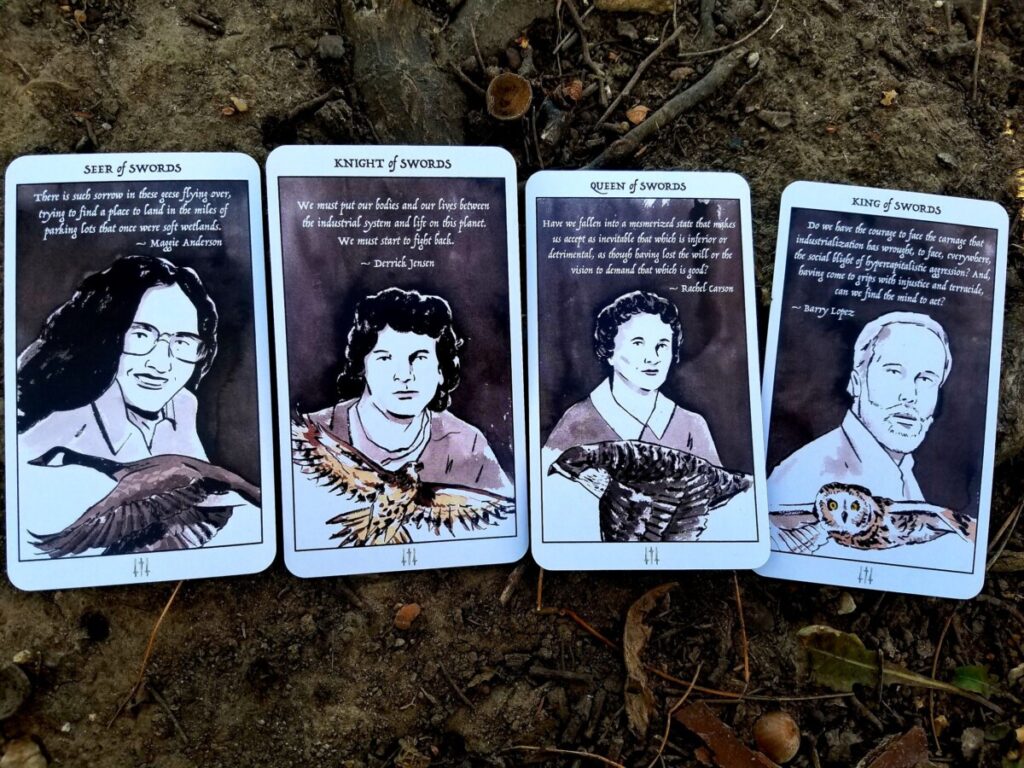
I wondered why he only included the major arcana in his book? He told me “It was format. Belt Publishing has a specific page count for its book printer.” And when I asked if he was interested in expanding upon his work, his response was an enthusiastic, “YES, I really want to create a digital resource or a print ‘zine or some kind of explanation for the minor arcana, even something short. I’m thinking of doing it midway next year depending on where I am on my current project.” I was pumped to hear it. You should be too.
Part of the fun of this deck has been puzzling out the plant and animal choices in the minor arcana cards. I was able to ask Matt about his choice for the two of cups, “Why Bergamot for Two of Cups? [The] main reason was to show a sharing two-way relationship, maybe something blurring the emotional and the transactional. The plan was to match up species with a co-operative relationship, so the clearwing moth and bergamot felt like a fit, something sunny and pleasant.”
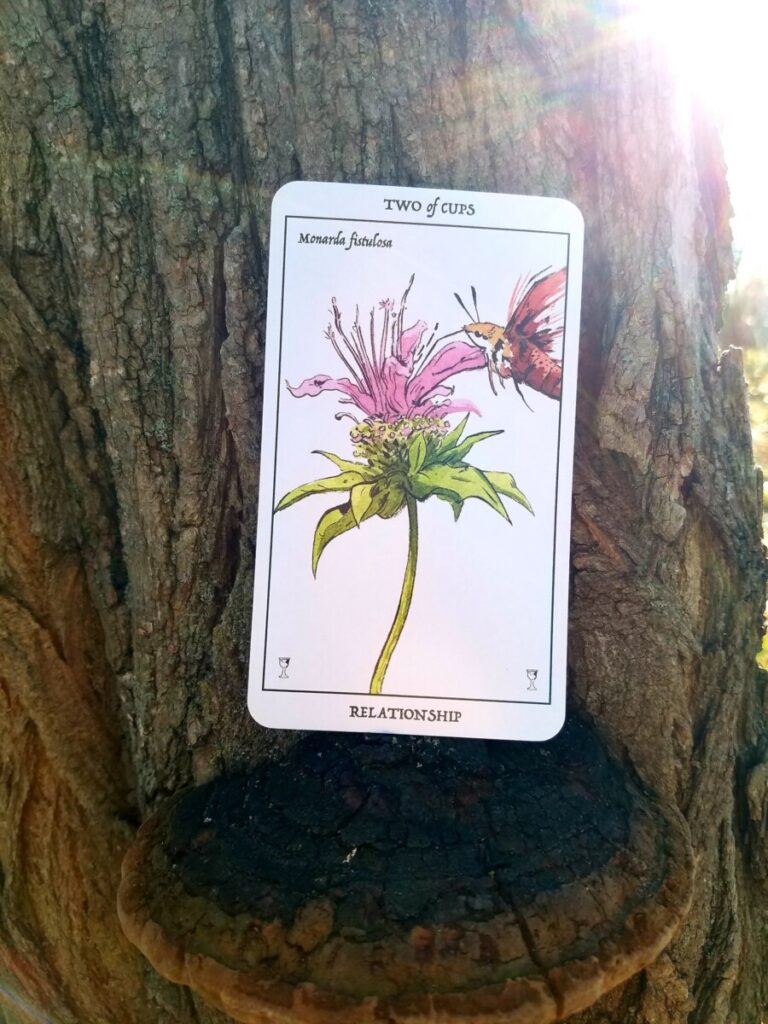
But I’ve been having even more fun researching for myself. Why the Pink Lady Slipper for the nine of cups? Is it because of it’s symbiotic relationship with the fungus on which it grows? Is symbiosis connected to the traditional wish fulfillment meaning? What about the fact that this orchid tricks bees into pollinating it, giving them nothing in return. What a smug little plant! I’m learning so much. It’s a blast.
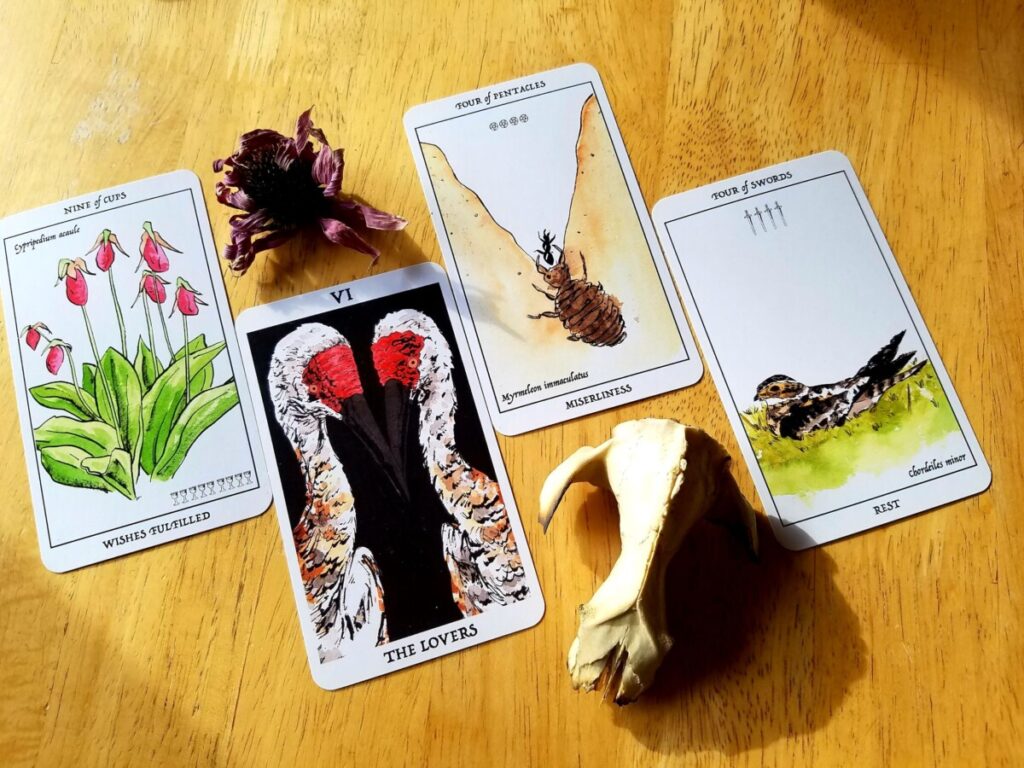
There are only two critiques I have for the Rust Belt Arcana tarot deck. The design on the back of the cards makes it obvious when a card is coming up as a reversal. If you don’t read reversals, it’s no biggie, but if you’re like me and you do, it stands out. Glaringly.
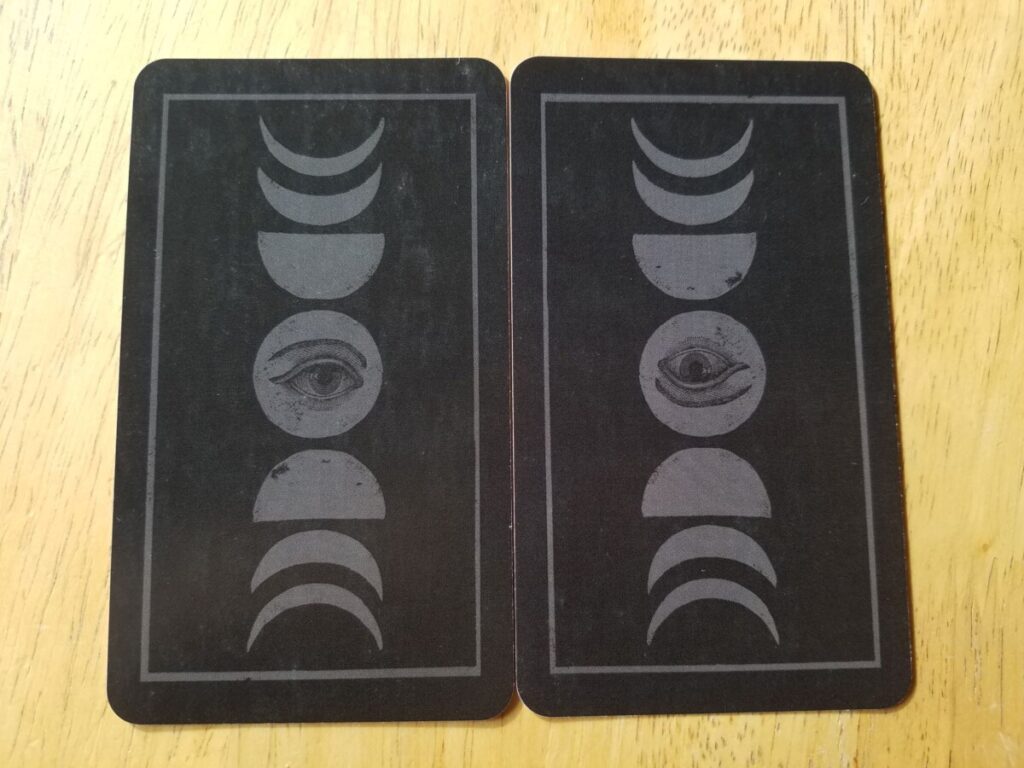
Additionally, I mentioned there is no little white book, and though keyword card meanings are included in the minors, it’s still not a deck I would recommend for beginners. I always suggest the traditional RWS deck when you’re starting out because most books utilize Pamela Colman Smith’s art for reference. That being said, I do think you should add Rust Belt Arcana to your collection because you won’t be a beginner forever.
Ultimately, the Rust Belt Arcana tarot is incredible. I wholeheartedly recommend it for tarot enthusiasts, naturalists, and witches alike. What better way to connect with the land on which you work and live than through the essays and images in this deck. I hope you enjoy it as much as I do.
Follow Matt Stansberry on twitter here
Follow David Wilson on twitter here and check out his animal oracle deck which I don’t have yet.
And follow Belt publishing here for updates and other awesome titles.
